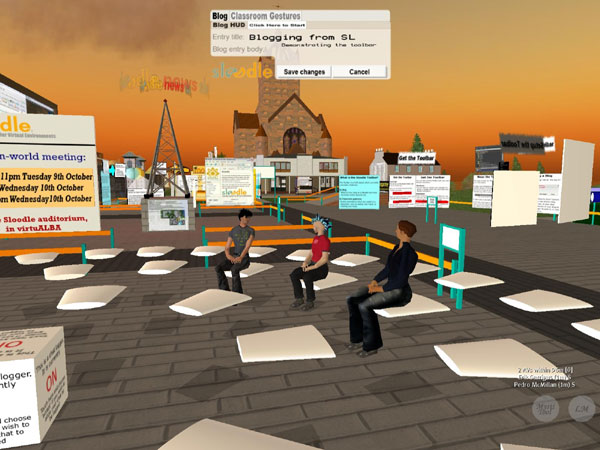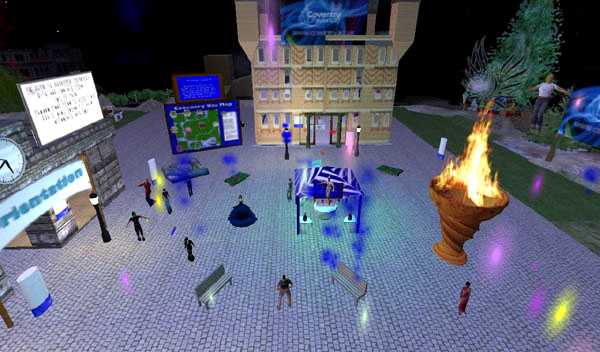The Second Life of UK Academics
Introduction: Second Life
Second Life (SL) [1] is an Internet-based virtual world developed by Linden Research Inc (commonly referred to as Linden Lab) and launched in 2003. A downloadable client program called the ‘Second Life Viewer’ enables its users (‘residents’) to interact with each other through avatars, providing an advanced level of social networking in the setting of a virtual world. Residents can explore, meet other residents, socialise, participate in individual and group activities, and create and trade items (virtual property) and services. Interest in SL among academics has been growing for some time. This has been fostered by Linden Lab, who provide various information resources [2], support and (heavily trafficked) mailing lists [3] for educators developing within SL. Various surveys into education use, such as that recently released by the New Media Consortium (NMC) [4], has also stoked academic curiosity. Consequently, an increasing number of universities, colleges, libraries, research centres and other academic entities have created a presence within SL (more commonly known as being ‘in-world’). In the UK Higher and Further Education sector, it is not just universities and colleges which are developing in SL. For example, JISCmail [5] and the JISC Regional Support Centres [6] have an SL presence, as has the Scottish Further Education Unit [7]. UCAS [8] even built an island to assist potential students going through the clearing process this year.
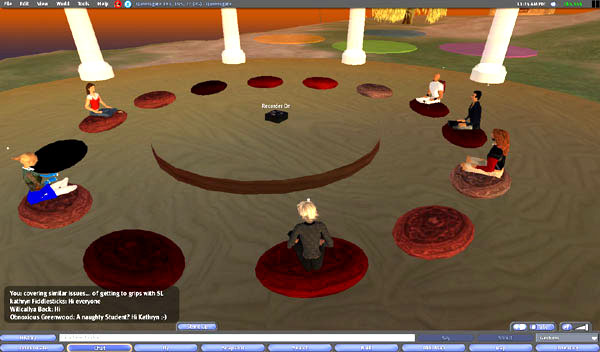
Figure 1: An in-world class at the University of Huddersfield
This article introduces a series of ‘snapshot’ reports, funded by the Eduserv Foundation, which record and examine the use of SL in the UK Higher and Further Education sector. However, it is frankly impossible to gain a realistic idea of the SL environment from merely reading about it. Although this article illustrates, with quotations, how UK academics are using SL, it is no substitute for trying it yourself. The viewer, and a basic ‘resident’ account, are free. Once orientation (such as moving, flying and communicating) is mastered, it is recommended that academics explore a few of the wide variety of ever-increasing developments in-world, especially education and library facilities.
The Snapshot Reports
The Eduserv Foundation [9] is dedicated to ‘realising the effective use of ICT for learners and researchers’ by offering research grants, contributing to international interoperability standards-making activities, seed-funding and developing pilot projects and offering advice on good practice. Part of this activity concerns the application of virtual environments, and SL in particular, to teaching and learning. The Foundation supports experimentation with, and evaluation of, the use of SL through funding of several research projects [10], symposiums and other events held in-world and in the real world [11], and by developing its own island [12] through which it provides various facilities, exhibitions and housing for academic projects.
In 2007, the Foundation decided to examine the use of SL in the education sector more formally, with these goals:
- to determine the ‘state of play’ of SL developments within the Higher and Further Education sector
- to discover how these developments are supported, in terms of time, funding and other resources
- to explore the functionality of these developments, i.e. which types of media or interactive service they incorporate
- to establish how ‘busy’, or well-used, the developments have been and discover any impact resulting from their implementation and use
When the research started, there was only a small number of - visible - UK academic SL developments; therefore, the work took a global perspective. However, through the spring of 2007, a considerable number of UK Higher and Further Education SL activities were discovered and the research turned its focus to this country alone.
The resulting snapshot report [13] was released in July 2007. The report’s appendix gives the SLURLs (in-world addresses, accessible through the Web browser and the SL viewer of any SL resident) of the various universities and colleges which were discovered (where public access is allowed) in-world, and therefore provides a good starting point for UK academics beginning their exploration and evaluation of SL. Soon after the original snapshot was released, several readers pointed out other UK academics developing in-world. Along with some fine-tuning, an updated version of the report was released in September 2007.
Nine Types of SL Use
Eight (overlapping) categories of SL use were defined in the original survey, and nine in the update, in order to group similar development activities. Here, we show a typical example from each category; note that ‘academic’ is meant in the broadest sense, i.e. students, lecturers, teachers, professors, administrators - basically anyone who works, researches or studies within a Higher or Further Education institution.
1. Thinking or Grouping Together
In this category, academics and groups of academics were discussing using SL in some way, but had not yet reached the stage of formally planning activities. For example, Colette Lynch posted on the JISCmail Secondlife mailing list in mid-September:
I run a small unit within the Belfast Metropolitan College which is one of the largest FE/HE colleges in the UK. My unit, mallni6, produces rich media content for Broadband I am very keen to explore the opportunities which second life offers for our Foundation degree multi media students as a way of enhancing their digital media skills by involving them in active projects.
2. Actively Planning an SL Presence
Here, academics have secured some resources (staff and/or financial), and are planning activities in-world. Toni Sants from the School of Arts and New Media at the University of Hull describes their plans:
The purpose of our current SL development is purely exploratory. We want to see what we can do with/in SL by being in-world. We know we’d like to establish a presence for our department and campus (but not necessarily the whole university) in the coming months, but it’s more important to understand what SL is all about than just building it and hope they show up.
3. Research within SL
SL is being examined by many academics for use as a research tool or environment, or as a subject of research in itself. At the University of the West of England Manuel Frutos-Perez, the Deputy Head of the E-learning Development Unit, describes their SL research development:
We are aiming to build a Research Observatory in Second Life for our research students. We have just announced internally a design competition so that students can put forward their ideas about how we could use our space in Second Life. Later on in the year we will design collaborative tasks that groups of students will complete in Second Life. The tasks will seek to maximise group creativity and will encourage students to be enterprising and to engage in discovery, synthesis and fact-finding missions. The tasks will be structured and facilitated by academic staff but will essentially be learner-centric.
4. Developing Tools and Simulations
A smaller number of academics are using SL as a platform to develop tools. Dr Peter Miller, from the Biological Sciences department in the University of Liverpool, introduced his work in the first snapshot:
I am currently developing a series of visualization tools that I intend to use in cell and molecular biology lectures and make available in-world for informal student use from September 2007 onwards. They currently comprise two workstations with a strong focus on providing an end-user building capability, one in the context of protein domain structure, the other as a means of animating regulatory networks in gene expression.
5. Staging an Exhibition
Art and design staff, in their responses, were keen to ‘test the boundaries’ of what they can achieve in SL. For example, Julia Gaimster, involved in developing the SL London College of Fashion building, replied:
We are not aiming to replicate the college but to create areas that enable creative thinking and activities and we are keen to develop collaborative projects using the space.
And indeed, the college did put on a successful exhibition, as Julia noted in September 2007:
We did manage to stream keynote speeches from the designs on elearning conference to LCF and LCC islands. The LCF exhibition continues to attract visitors over 1660 to date.
6. Department or Centre Presence
Several departments, centres and groups have developed their own individual presence. At Bromley College, Clive Gould developed an interactive area for prospective students of his computing courses to use:
Over the years I have come across applicants for the courses who did not have prior experience of programming. This year I have been able to recommend the sim to such applicants. There they can learn LSL (Linden Script Language) programming in a fun environment and see if they enjoy programming and are good at it, before committing themselves to an HE course involving a lot of programming.
7. Using SL to Support a Course or Module
By far the largest number of respondents fell into the category of academics running courses, or planning to run courses, using Second Life. Simon Bignell, from the Department of Psychology at the University of Derby, describes the use of SL in the teaching of 30 psychology students:
The SL-Labs project at University of Derby is up and running encouraging Derby psychology undergraduates to engage with the unique attributes of a 3D virtual world to learn about basic Psychology skills. We are currently taking a group of 30 psychology undergraduates into Second Life on a supplementary module option of our Psychology Skills module. Here students learn core psychological skills including experimental design, essay writing, presentation preparation, critical thinking skills, and plagiarism avoidance and referencing.
8. Supporting Developments across Several Departments
Some academic developments are designed to support academics and courses across several institutions. Daniel Livingstone describes collaborative SL developments being built by the University of Paisley:
We have an island (virtuALBA) which is still in development, but which hosts a share of the Eduserv Foundation-funded Sloodle project (along with virtual neighbour and collaborator, San Jose State University). The island currently also hosts an exhibition, university information centre as well as a corner for the University of Aberdeen medical school and a small area in use by the University of Strathclyde (who now have their own island). Last year we taught a class (Collaborative Virtual Environments) which used a range of technologies including SL - and which should be repeated this year.
9. Building a Campus-wide Presence
Several universities, such as Anglia Ruskin, Edinburgh, Hertfordshire, Oxford and Sunderland, are at different stages in developing a campus in-world. Coventry University was the first such UK institution to launch, in September 2007, as part of the Serious Virtual World 2007 Conference. The launch was observed both at the real world conference, and within SL itself:
Last night the vice chancellor (Madeleine Atkins, who avatar name is Phoenix Watkins) launched the island at a formal launch at Coventry University in a lecture packed with academics and business. In world she cut the virtual tape and set off the fireworks. Many people came to the launch in world as well. We have had a lots of local and national media interest. We also had the first serious virtual world conference outside the USA and it was all streamed into Second Life over the last 2 days. We have more courses starting to use it now, including transport design, fashion design, theatre studies and an MSc in clinical management.
Issues Faced by Academic SL Developers
Numerous issues confront academics wishing to develop in-world; they are discussed in great detail on several of the mailing lists dedicated to academic developers. Three issues in particular are frequently debated.
1. Cost and Time
To develop a presence in SL requires an area of land, which conventionally costs money. Funding is also required for related costs, such as search listing, apparel and items constructed in SL by third-party developers. Other significant costs for building and maintaining a presence in-world are up-to-date PCs or Macs that have sufficient processing power to cope with Second Life, and staff time.
UK academics developing in SL received their funding from a variety of sources. Some received funding from grants and awards. For example, the OU developments were funded by NAGTY, the Innovation Unit, BECTA and NESTA, while the Department of Information Science at the University of Loughborough, according to James Dearnley, ‘ …received a HEFCE grant (which was distributed by the University) for the island.’
Others used internal institution money; Maggi Savin-Baden explained that Coventry University funded ‘… the cost of the island and £20k to purchase team to build (students flying squad) and to help staff time.’
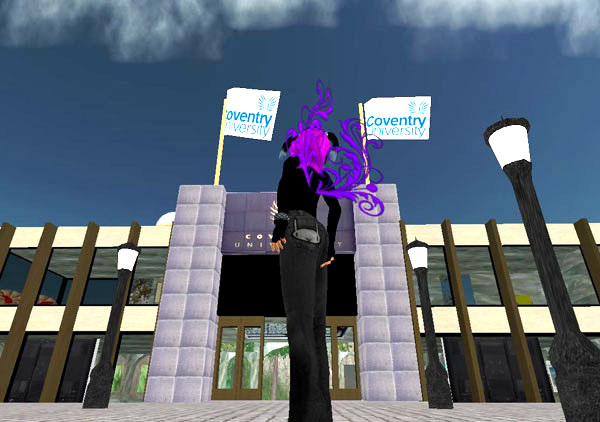
Figure 3: At the entrance to Coventry University
For academics struggling to find money, various schemes exist to give discounted or free land or facilities for genuine education development. EDTECH island is:
… a free, 24⁄7 open-access resource to support educators in the study and use of virtual world environments for teaching and learning. We offer any educator the ability to use the facilities on the island to support and research virtual world teaching.
UK academics can also apply to one of the calls for proposals from the Education UK initiative [14], which offers free areas of land and building space on an island dedicated to teaching and learning.
Estimating the amount of time needed to develop in-world is difficult, as responses varied tremendously. Some academics spent relatively little time in constructing their site in-world, such as the team including Maged Kamel Boulos at Plymouth University:
The actual building in SL doesn’t take much time. A week or two would usually be enough, thanks to prefab objects that can be edited and customised.
However, others spent considerable time and effort, often cutting into their time outside contractual working hours. Ian Truelove from Leeds Metropolitan University reveals:
… if only I’d kept a log. At least 40 hours a week between myself and Graham Hibbert. Often a lot more. We’ve had the sims since April, so probably about 500 hours. The vast majority of that time was not in official work time, although LeedsMet have been very supportive, and allowed us to be flexible with our work time to develop the island. We have time allocated for research and scholarly activities, so some of the time fits into this. It is a form of entertainment for us, so we don’t feel hard done by. It’s better than watching TV.
2. Simulate Reality or Create Anew
A topic that frequently appears in SL discussion forums is whether to ‘mimic’ a structure from the real world, or to create something that uses the opportunities afforded by the design tools of Second Life. The mimic argument is often given on mailing lists; for example [15]:
One of the basic principles of good teaching is to begin on familiar ground and use it as a launch zone for stepping into the unknown. If a learner has to deal with too many new experiences at once, she can be distracted from the one you intended as the focus. I believe that if SL were NOT full of familiar RL features, it would not be an effective learning environment.
Some institutions are adopting the mimic ethos, creating an image of their campus in-world. Ian Truelove explains Leeds Metropolitan University’s reason for recreating its campus in SL:
We recreated our RL building to provide an initial bridge for new users (to stop them feeling too scared by this strange new world and to give them a sense of ownership).
The opposite, anti-mimic stance is taken by people wishing to overcome the physical and psychological limitations of RL environments. Paul Maharg explains the approach being taken by the law department in Strathclyde University:
We want to create a form of education that’s quite different from RL forms & genres. There’s a lot in SL that merely mimics RL forms of education.
Imperial College London uses both approaches, mimicking the exteriors of their buildings, but using SL to add functionality to the interiors. Maria Toro-Troconis explains:
We developed Imperial College’s Queen’s Tower as the main land mark. We also developed the Sir Alexander Fleming Building. The inside of the building doesn’t represent the real structure. This is because we wanted to make it available as a teaching hospital. Inside the hospital our Head of Undergraduate Medicine gives a welcome message as well as the Student Union President. Course Guides can be downloaded from the main reception and different links to the Student Union website, e.g. welfare area, are provided in the Student Union’s office.
3. Getting Support from Your Institution
Successful SL developments often seem to be the product of a determined academic who has the support of senior management. For example, Tony Sant stated that, ‘Our activity is sanctioned by a Dean and the Head of my department.’
Some academics received support from the top tier of university management; Mike Hobbs from Anglia Ruskin University reported in July that:
… the position is that the VC was proud to announce the purchase of an Island, the head of the IT and communications infrastructure has set up a ‘working group’ for coordinating the use of SL.
Keeping senior people informed, and subtly training them at the same time, seems to be a successful tactic. Andrew Marunchak from the University of Hertfordshire explains his approach:
I did a presentation about our Second Life activities to the Senior Executive Team, which included the Vice Chancellor, and no objections were raised.
However, it isn’t all good news. Several academics - mostly in the ‘older’ universities - reported obstructions to their plans for developing in-world. Mostly, the problems came not from other academics, but from administrative and support units in their institution. These included:
- IT services blocking the ports, or the wider network access, required for SL development
- the finance department refusing to recognise, or accept, purchase of ‘virtual’ land
- the media or PR unit wishing to control all aspects of development so as to have a uniform institutional appearance in Second Life
- units such as alumni services pushing for an institutional presence to have less of a focus on teaching and learning and more on income generation
Some academics have worked around these obstacles in various ways. Several have purchased small plots of land or buildings themselves and are developing unofficially - though this will create problems later on should they wish their development to become part of an official island for their institution elsewhere.
Trends
An accurate figure for the number of UK education developments is difficult to determine, due to some institutions and academics developing in a closed (non-public) manner. In addition, those who give their island a different name to that of their institution are difficult to locate, as they will not be picked up by searches in SL on university and college names.
However, what is clear is that the number of UK institutions (and academics within institutions) developing in SL grew in the two months between the original snapshot and the update. In the few weeks since that update, several more UK academics have appeared ‘in-world’, signs of an ongoing trend in terms of experimentation and development using SL. There are now at least 40 UK universities developing at an institutional, departmental or (lone) academic level, in addition to various colleges.
The original and updated snapshots showed that SL developments are more prevalent in colleges and the ‘newer’ universities (82% of university responses for the original survey), rather than the ‘older’ universities (18% of responses). Why SL is used disproportionately more in newer universities is unclear; possibilities include:
- colleges and ‘new’ universities offering vocational subjects which are more suited to SL use
- additional, accumulated bureaucracy in older universities, that is not (yet) present in ‘new’ universities, hindering SL development
As various UK universities and colleges create individual presences in-world, it is hoped that successful examples will emerge showing teaching, research and support units (such as income generation) living happily alongside each other. These, and the series of Eduserv Foundation snapshot reports, will, it is to be hoped, provide evidence and models for other academics and institutions to study and adapt, helping them make better use of this intriguing development tool.
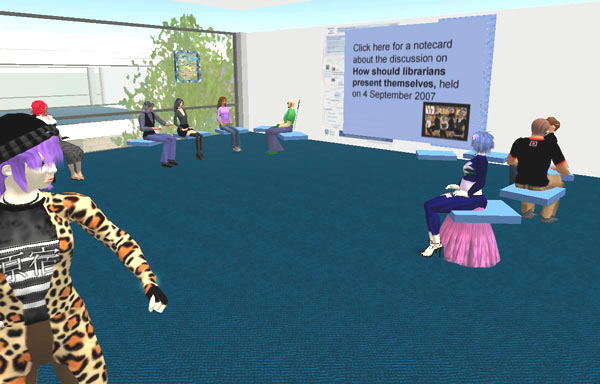
Figure 5: An in-world discussion on “How should librarians present themselves”
Future Snapshots
Many academics have said they will run courses in-world during the 2007-2008 academic year. Feedback from these courses should make the advantages and limitations of using SL in teaching and learning clearer. This information (or evidence) is increasingly requested by academics trying to determine whether SL is ‘right for them’, or trying to make a case internally to proceed with development. Consequently, the next two snapshots (March and September 2008) will focus more on the impact of using SL within formal Higher and Further Education.
On an ongoing basis, the Eduserv Foundation is looking for examples of SL being used within UK universities, colleges and schools, i.e. the UK education sector. This includes, but is not limited to:
- initiatives listed or described in the snapshot reports which have progressed in some way
- institutions constructing their own presence
- departments constructing their own presence
- individual academics running courses within SL
- support centres active in-world
- departments or academics experimenting (‘testing the water’) with SL before committing to a full-scale development
- researchers conducting research within SL
- students developing and exhibiting course-related work in-world
We are also interested in developments that are not yet publicly accessible. Please contact the author if you are undertaking one of the aforementioned activities and are in the UK education sector.
Acknowledgements
Thanks to Ed Barker, Pete Johnston and Andy Powell of the Eduserv Foundation, and the considerable number of respondents to both surveys, for their input and content. My thanks also go to Cheryl Reynolds, Maggi Savin-Baden, Daniel Livingstone and Sheila Webber for the screenshots from Second Life used in this article.
References
Editor’s note: The Second Life URLs (SLURLs) in these references can only be accessed by Second Life residents, i.e. users already registered with Second Life.
- The Wikipedia entry for Second Life http://en.wikipedia.org/wiki/Second_life Accessed 25 October 2007
- Second Life Education http://secondlifegrid.net/programs/education
- Second Life Mailing lists http://lists.secondlife.com/
- NMC Publishes Results of Educators in Second Life Survey, October 2007 http://www.nmc.org/news/nmc/sl-educator-survey
- JISCmail SL presence http://slurl.com/secondlife/Education%20UK/200/128/22
- JISC Regional Support Centres SL presence http://slurl.com/secondlife/Education%20UK/240/78/21
- Scottish Further Education Unit SL presence http://slurl.com/secondlife/Education%20UK/30/180/21
- UCAS clearing house island http://slurl.com/secondlife/UCAS/128/128/0
- Eduserv Foundation Web site http://www.eduserv.org.uk/foundation
- Eduserv Foundation research grants http://www.eduserv.org.uk/foundation/grants
- Eduserv Foundation 2007 symposium http://www.eduserv.org.uk/foundation/symposium/2007/
- Eduserv SL presence http://slurl.com/secondlife/Eduserv%20Island/97/41/30
- ‘Snapshots’ of SL use by UK Higher and Further Education http://www.eduserv.org.uk/foundation/studies/slsnapshots/
- Education UK Islands free educational space programme, 2007 http://www.sleducationuk.net/?q=node/5
- Loon, R. (2007). The copying of RL into SL is rather silly. Educators’ mailing list.
https://lists.secondlife.com/cgi-bin/mailman/listinfo/educators

